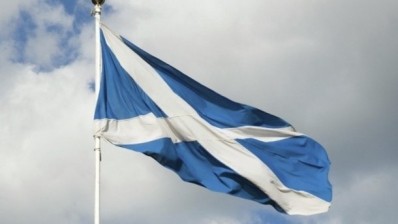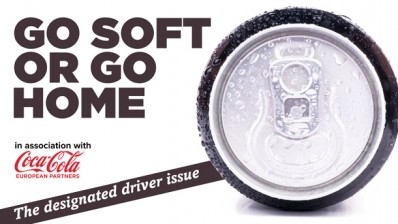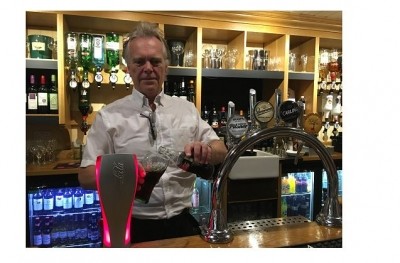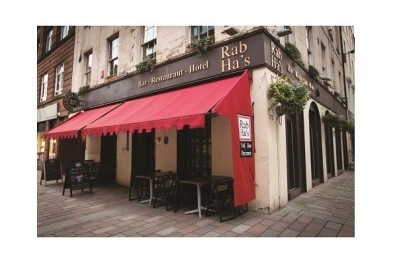Designated Driver
How Scotland’s drink-drive law has changed pubs
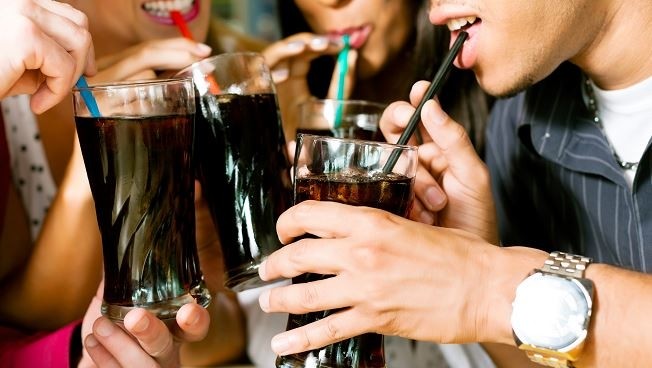
It was only a minor matter of 30mg, but the reduction in Scotland’s drink-drive limit two years ago has had a big impact on the way people drink, and on the pubs they do it in.
As we head towards the third Christmas of the lower 50mg limit, the latest survey by the Scottish Licensed Trade Association (SLTA) indicates that only 28% of pubs, bars and hotels are in growth while 39% are showing a year-on-year decline in trade.
To SLTA chief executive Paul Waterson the numbers are “alarming”, and there’s no doubt in his mind that the measure has been “the worst Government initiative for the on-trade. It has changed the drinking habits of a nation and put us under real pressure”.
The impact was immediate. Within a couple of days Waterson’s phone was ringing as his worried members saw their customers choosing to stay at home rather than risk a drive to the pub.
By the following April SLTA research showed 64% of 400 outlets surveyed had seen trade slide since the previous year, with 29% saying the fall was more than 10%. For some, midweek takings were at least 30% down.
The crisis continued through the first summer with most pubs seeing sales continue to fall, with more than a third of houses in rural and tourist areas watching trade decline by more than 10%.
Not surprisingly, 64% now considered the lower drink-drive limit the single greatest threat to their business.
And it was to get worse. Christmas 2015 brought no relief as sales continued to slide for 40% of pubs, and the latest SLTA figures suggest that the impact of the law, two years on, is still playing out for many.
“We thought it would have bottomed out, but it hasn’t,” says Waterson.
That reduction from 80mg of alcohol per 100ml of blood to 50mg has proved to be a tipping point that few could have predicted. Compounding the issue, licensees have been reluctant to speak out, stifling debate.
Drink-driving is a sensitive matter. Nobody, least of all the pub trade, wants to say anything that might be interpreted as questioning efforts to reduce it, and public opinion is clear. The Scottish Government’s 2012 consultation showed 74% of Scots supported a cut in the limit, and 87% of those thought 50mg was the right level.
Indeed, it does no more than bring Scotland into line with most of the rest of Europe. But Waterson argues the problem isn’t simply the limit, but the fact that, because it doesn’t have the power to change them, the Scottish Government kept the same penalties.
“Drinking one pint of lager could give you a ban, a criminal record and all the stigma attached. The punishment doesn’t fit the crime. There’s no calibration.”
Combined with strong enforcement, it made people think hard about their behaviour. A pint a lunchtime or on the way home from work was out.
Even when they haven’t taken the car to the pub, they’re worrying about whether they’ll still be over the limit the next day, when they’re driving to work or to the football at the weekends.
“People have learned to plan their drinking strategically,” as Waterson puts it.
Drink-driving
Yet the impact on drink-driving itself is unclear. Two years in, the Scottish Government has yet to produce a full report.
Against a background of a steady decline in drink-drive casualties over a decade, figures for the first full year of the lower limit actually show a rise of 5% in the number of drink and drug-driving offences, though the Government points out that numbers are down compared with the last full year of the old limit.
Colin Valentine, the Scots national chair of the Campaign for Real Ale (CAMRA), will be pressing for a proper impact assessment.
“Anecdotally, we know people who would have had a pint and driven home are no longer doing that, but I’d like to know whether that’s reduced the number of accidents and drink-drivers on the roads. That information should be available now. There should be evidence.
“And the Scottish Government should be looking at the impact on the pub trade, too!”
CAMRA is encouraging licensees to offer carry-out beer for drivers to take home as one way of easing the impact, but alongside the SLTA and the Scottish Beer & Pub Association (SBPA) it believes the Government could be doing more to help, for instance by improving public transport for rural communities.
“More than a million people in Scotland live in rural areas, 20% of the population, and all over the UK we’ve seen cuts to the public transport services that enable them to get to the pub, especially after dark,” said Valentine.
That’s in the SBPA manifesto, too, along with a call for extra business rate relief.
“The change in the drink-drive limit has undoubtedly been a challenge for the trade, with pubs and other licensed premises – especially in rural areas – suffering,” said president Mark Baird. “The challenging economic environment and changing consumer behaviour has also added to pressure on the industry.
“The licensed trade needs support. This could primarily be delivered through added business rate relief, which would safeguard jobs and an industry so important to our tourism and the wider economy.”
The Scottish Government is resolute, not only on the 50mg limit, but also on the penalties attached, considering them to be “appropriate” and no doubt fearing any retreat at this stage might be seen as condoning a level of drink-driving.
“We know licensees do not wish to place their customers or other road users at risk, and if people act responsibly, for example by nominating a designed driver, this will help mitigate any impact on trade,” it says.
Justice Secretary Michael Matheson added: “Scotland is leading the way across the UK with the introduction of a lower drink-drive limit and we will continue our efforts to change driver behaviour to make our roads safer.
“Drink-driving is completely unacceptable and puts lives at risk, therefore the best approach is to avoid alcohol altogether if you intend to get behind the wheel.”
Meanwhile, publicans in the frontline are doing their best to adjust by broadening their range of soft drinks and alcohol-free beers and ciders, and even reconfiguring their trading areas to give more prominence to food.
Extra dining room
Last December, the curiously named Ban-Car Hotel on the road between Peterhead and Fraserburgh, in Aberdeenshire, in north-east Scotland, halved the size of its bar and removed the pool table to create an extra dining room.
“The lower limit has had a big impact,” said licensee Tina Gibbins. “Drivers used to stop off here on their way home from work but that doesn’t happen at all now. It was never a busy bar, but it’s fallen away to nearly nothing and we only need one member of staff to cover it and food service in the lounge.
“We have attracted some new customers because people come here just to see what’s changed, and sales of soft drinks are up. We’ve also added more alcohol-free beers including Beck’s Blue and BrewDog Nanny State.”
The Hielan Jessie is far from being a rural pub – it’s near the centre of Glasgow – but it’s still been hit by the lower limit.
“We’re a traditional wet-led boozer and it’s had a significant affect on footfall and overall volume, which is down 4% to 5%,” reports Billie Gold, whose family has run the business for more than 30 years.
“On Sunday evenings everyone drinks up about 7pm or 8pm because they’re driving the next morning and terrified of getting caught, so they err on the side of caution. Weekdays, too, people would come in from the supermarket opposite for a pint, and you don’t see that any more.
“It’s not the end of the world. We are on a bus route, so that’s a plus. Most customers are local or older people who’ll use public transport. But people who drive to work can’t have a pint, so they don’t have anything, while the hardened drink-driver will do it anyway.
“We’re selling a broader range of soft drinks, where it only used to be spirit mixers, and we prominently display Tennent’s alcohol-free lager.”
Colin Adams of the George Bar in Hamilton, near Glasgow, continues to benefit from being the only pub in town with cask beer, but he’s seen change too.
“We’ve noticed it most early evenings on Fridays when a lot of lads would come in to touch base. The drivers have stopped doing that, so the rest have, too. There’s also been an effect on occasional customers who used to come here just to get out of the house. They don’t do that any more. The sensible ones won’t have that one pint.
“In the last few years we’ve also been hit by the smoking ban and cheap supermarket drink. People are thinking more about what they do and when and where they do it. They can’t do exactly what they want any more.”
“I’d be hurting now, if I was out in the country.”
Dennis Forsyth of Cheers Café Bar & Tavern in Fraserburgh, Aberdeenshire, believes a lot of operators could be doing more to adapt.
“We’re lucky that we’re in the centre of town and there are plenty of taxis and buses, but we’re noticing it and it’s destroyed pubs in smaller villages. My family own six bars between them and I can tell you they’re having a tough time of it.
“Part of the trouble is the majority of pubs here are still living in the ’80s and ’90s. They’ve not changed what they do. They only offer customers a staple diet.”
In contrast, Cheers has extended its range to include a choice of several tonics, flavoured alcohol-free ciders from Kopparberg and 10 mocktails, served in fancy glassware that “can make an awful difference,” says Forsyth. “People are looking for a better range of soft drinks now.
“It’s a case of adapting your offering, creating something your customers can’t have at home, giving them new excuses to go to the pub and catering for families, too.”
